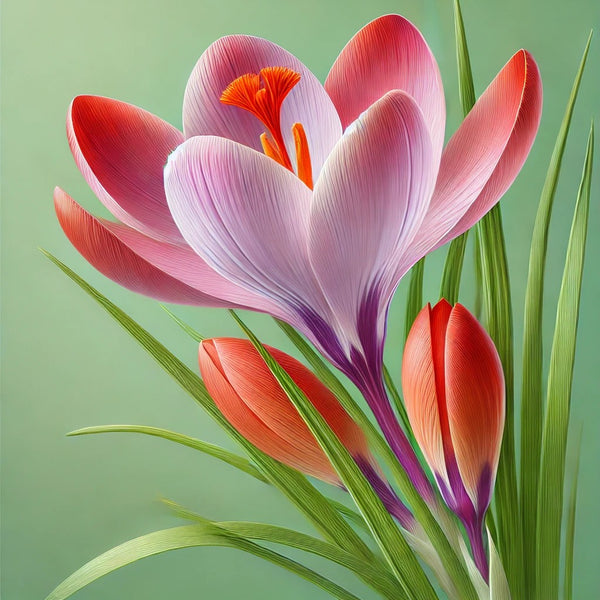
The Magic of Philodendrons
The Magic of Philodendrons: Living Color in Every Leaf
How light, time, and care paint your plant’s leaves
Walk into a room lit by soft morning light, and you’ll notice something extraordinary if you own a Philodendron—the leaves don’t just sit still; they shift. Emerald melts into chartreuse, crimson glows to bronze, and pale green veins catch the sun like brushstrokes. Philodendrons aren’t just houseplants— they’re slow, living gradients.
Light, Patience, and the Art of Change
Most philodendrons evolved under the dappled canopy of tropical forests, which means they thrive in
bright, indirect light. In higher light, red and yellow pigments (anthocyanins and carotenoids)
are more pronounced—new leaves can emerge vivid and warm before maturing to deeper greens. In lower light, chlorophyll
takes over, and foliage appears richer green with fewer warm tones.
Translation: your philodendron is supposed to change. New leaves often glow brighter, then settle down.
Give it time—weeks to months—for each leaf to unfurl and reveal its final palette.
Meet the Stars (Shop Our Favorites)
Philodendron gloriosum
The velvet-leaf icon: large, heart-shaped foliage with crisp white veining. A terrestrial crawler that looks sculptural in wide, shallow planters.
Philodendron ‘Moonlight’
A burst of citrus color—new growth glows chartreuse-yellow before maturing to luminous lime green. Brighter light keeps the glow going longer.
Philodendron ‘Birkin’
Deep green leaves overlaid with fine white pinstripes. Variegation develops over time—rotate weekly for even striping.
Philodendron billietiae
Architectural leaves with striking orange petioles. Loves steady warmth and bright conditions that deepen contrast.
Philodendron ‘Imperial Red’
Deep burgundy-red leaves that mellow to greenish-bronze with age—a living example of the color journey philodendrons are known for.
Want to browse everything in one place? Explore the full Philodendron collection on RedCrocus.
Care at a Glance
| Aspect | Ideal Condition | Why It Matters |
|---|---|---|
| Light | Bright, indirect | Keeps color variation vivid; prevents scorch |
| Water | When the top soil feels dry | Prevents root rot and leaf yellowing |
| Humidity | 60–80% | Encourages glossy foliage and healthy growth |
| Soil Mix | Airy, chunky blend (bark/perlite) | Supports root oxygenation and drainage |
| Fertilizer | Every 4–6 weeks in spring/summer | Fuels vibrant new growth and color |
Note: Many philodendrons are toxic if ingested by pets or children. Place responsibly.
Final Thoughts
Owning a philodendron is an exercise in mindfulness. You learn to notice small shifts—a leaf unfurling, a vein brightening, a color deepening. These aren’t just plants; they’re living reminders that beauty evolves slowly. When you’re ready to add one (or five) to your space, explore our full collection: Shop Philodendrons at RedCrocus.
